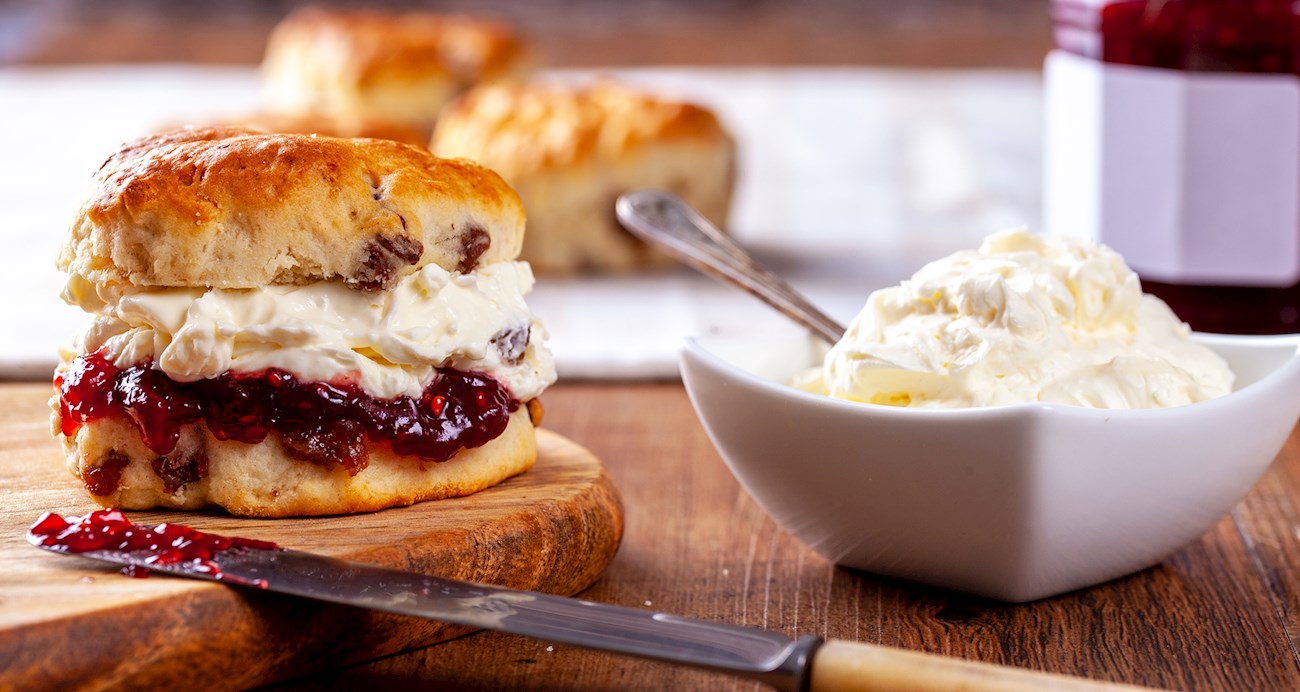Clotted cream
Clotted cream is a traditional thick cream that's characterized by a much higher butterfat content (64%) than in heavy cream (48%). It has been a staple in Cornwall and Devon for a long time, and it's believed that the clotted cream was brought to England 2000 years ago by Phoenician settlers, who made it as a way of preserving buffalo milk.
Although the process of making clotted cream is nowadays done with centrifuges, in the past, it was made by heating full-fat raw cow's milk or cream in shallow pans, and once the nutty and buttery crust has formed on top, it was moved to a cool place in order for the thin skimmed milk to quickly sink and make a layer underneath the thick cream.
Once fully cooled, it was mixed in wet and cold wooden bowls to remove the watery milk, and the rest was layered in pots. Clotted cream is often used to make biscuits and ice cream or enrich soups and sauces. Depending on where it was produced, it's called Devon clotted cream or Cornish clotted cream, and it's typically sold in jars.
In Devon, it's usually spread on a scone, then topped with jam, and in Cornwall, the scones are first spread with jam, then clotted cream.

